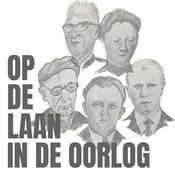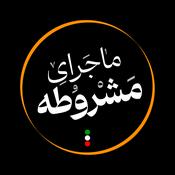119 afleveringen

E118 The Birth of Yiddish ft. Wilf
10-12-2025 | 1 u. 21 Min.
Support us on Patreon---At the dawn of the Middle Ages, small numbers of Jewish families ventured across the frozen Alps, seeking a new life in a foreign land they called Ashkenaz. In their workshops, at the market, and around the shabbat table, these people created a new language in secret: one that joined together the Hebrew writing system of ancient Palestine with the Germanic vocabulary of their Christian neighbors. Despite its obscure and polygenic medieval origins, this neighborhood speech would grow to become a fundamental element of Jewish history and identity and a true world language: Yiddish.This episode of Gladio Free Europe explores the origins and development of Yiddish with the help of Wilf, esteemed circumpolar Yiddish scholar and longtime friend of the pod. Wilf guides Liam and Russian Sam through the complexities of the language's development and grammar. The many influences on Yiddish, from its Semitic alphabet to its Slavic grammatical structures and its unexpected Romance loans, tell the story of the Ashkenazi Jewish people. So too does the resilience and growth of Yiddish in spite of centuries of hostility and, in the 20th century, near-total annihilation. Putting Yiddish in the context of the rise of rabbinical Judaism and the expansion of the diaspora, we see how this Germanic vernacular developed alongside the liturgical language of Hebrew. While widespread bilingualism meant Yiddish and Hebrew would influence each other throughout their history, the two languages were often perceived in conflict. Yiddish would be demeaned and degraded throughout its history, both by vicious bigots who hated its Jewishness and pious scholars who thought it not Jewish enough. Yet despite centuries of hardship, the language would blossom across the medieval period into a literary language along the lines of French and Italian. Medieval Jewish writers eagerly took part in the broader European tradition of chivalric romance. Yiddish adventure stories about Jewish knights, Jewish princesses, even a Jewish King Arthur were widely read and have some lingering influence on Jewish folklore to this day. As Yiddish spread eastward, out of the German lands and into the kingdoms of the Slavs and Hungarians, the language of the Ashkenazi Jews ceased to be a medium of communication with Christians, but instead an ethnolect that could only be understood by Jews. The unique situation of Eastern European Jews, more numerous and more culturally distinctive than their Western European neighbors, would be fundamental to the later development of Yiddish.Listen to the newest episode of Gladio Free Europe to understand what makes Yiddish, the heymish mother tongue of the Jewish hearth, unique among the languages and such a treasured aspect of the Jewish experience. Borek-habo!

E117 The Making of Modern Florida ft. Grace Cathedral Park
07-11-2025 | 2 u. 5 Min.
Support us on Patreon---From 1880 to 1930, life on Earth was reshaped in ways previously inconceivable. Nowhere was this transformation more total than in Florida. In a single generation, a peninsula hardly charted since the days of Ponce de Leon was molded into a testing ground for new modes of living and capital accumulation. This episode of Gladio Free Europe drains the marshy mysteries of time to understand how Florida, once the most foreign of all the contiguous territories, became perhaps the most fundamentally American state of all.Jackson (@GraceCathedralPark) returns to the show for a deep exploration of modern Florida history, running from the noble failures of Reconstruction up through the reassertion of Confederate control and the establishment of a new society, a unique and twisted marriage of northern venality with southern barbarity. Gilded Age robber-barons like Henry Flagler took to the waters for pleasure and for profit, turning the remote Sunshine State into a secret garden for the idle rich. Railroads soon connected Florida to the American mainland north and south, bringing both well-heeled investors and threadbare farmers down the peninsula. Poor whites in particular saw Florida as a beacon of the New South, where a man could make his fortune in land sales or the orange boom. But these newcomers had little interest in sharing their wealth with the African American residents of Florida, some of whose ancestors had been working the swampy soil since the Spanish era.Florida after Reconstruction experienced some of the worst racial terror anywhere in the United States, with an exceptionally high rate of lynchings and episodes of mass violence at Ocoee and Rosewood, where white mobs ransacked black neighborhoods and murdered dozens upon dozens. Then the swamps, once a refuge for escaped slaves and Seminole Indians, were drained out to the sea, paved over to make room for America's newest feat of social engineering: the suburb.By the Roaring '20s, Florida's economy primarily revolved around real estate and tourism. Middle-class Americans flocked to the new neighborhoods that sprawled across the ruined wetlands, many of which were designed for cars rather than people, and most of which were racially segregated. Meanwhile significant numbers of Cuban immigarnts migrated to the Gulf port of Tampa, turning a small fishing town into a cigar city that rivaled Havana.Transformations along these lines happened across the United States, particularly in other Sun Belt regions such as Arizona and Southern California. But nowhere else were these changes so extreme, so rapid, and so destructive... not only to the natural landscape upon which these plains were laid, but on the residents pushed aside to built this petty-bourgeois fantasy. The state has been a theme park since decades before the Mouse spread his ears. In many ways, Florida is its own kind of twisted intentional community, and perhaps America's most successful utopian experiment.

E116 The Devil in America
31-10-2025 | 1 u. 37 Min.
Support us on Patreon---Since the first European settlers took unsteady steps on its alien shores, America has been haunted by the Devil. Fears of Satan and his human confederates have long since lurked in our psyche, and played an overlooked role in the cultural and political development of the United States. In this week's episode of Gladio Free Europe, Liam and Russian Sam descend into the blackest reaches of American and European folklore to see how our forbearers understood the unspeakable.This episode explores the development of satanic conceptions and imagery in American life, beginning with the emergence of the demonic beings in ancient Jewish cosmology through the spread of Christianity and the settlement of the New World. Medieval and Early Modern Europeans saw Satan everywhere, guiding the hands of sinners and unbelievers to tempt mankind and doom souls to Hell. The devil was understood to be the real ruler of this sinful earth, as proven by the encirclement of Christendom by kingdoms of heretics and heathens. European explorers in America, Africa, and Asia believed the religions they encountered were expressions of Satanism, and used this belief to justify colonial institutions of violence and subjugation. Even within Christian lands, Satan held sway through the power of his followers, the secret legions of witches.This diabolical worldview had real implications on early American society, most notoriously in the New England Witch Trials in which hundreds of Puritans were accused of being willing agents of Satan. Though belief in witches faded across the 18th and 19th centuries, Americans still understood the Devil to be clawing at their back. In all of these periods, it was also understood that Old Scratch could be defeated at his own games. This motif is exceptionally common in American folk tales and especially folk songs, even making its way into William Dieterle's iconic 1941 film THE DEVIL AND DANIEL WEBSTER.Though most Americans no longer believe in the devil in a literal monstrous sense, more metaphysical attitudes toward Satan survive. We continue to understand evil in terms of external corruption, as a deviation from our humanity rather than the result of our lowest impulses. And across the 20th and 21st centuries, periods of distrust and paranoia have allowed true belief Satan and his witches to re-emerge in our discourse. Despite how modern and rational contemporary Americans imagine ourselves to be, the Devil has us in his clutches.

E115 Early American Florida and the Seminole Wars ft. Grace Cathedral Park
24-9-2025 | 1 u. 45 Min.
Support us on Patreon---American troops descend into a humid jungle, sniped at from the trees from an invisible enemy. Unable to discern insurgents from civilians, the army begins burning villages and destroying entire communities. After years of failures on the battlefield, and extreme criticism of the war at home and abroad, American troops withdraw battered and beaten, leaving piles of native corpses in their wake. Sound familiar? This is the Second Seminole War, one of the largest conflicts fought on American soil and the bloodiest war waged against Native Americans.This episode of Gladio Free Europe continues our discussion on the conquest and settlement of the Sunshine State, with a focus on the violent but ultimately unsuccessful subjugation of the Seminole Nation. Though little-discussed in modern times, this brutal and genocidal struggle made Florida what it is today. The violent removal of thousands of Seminoles from Florida to Oklahoma would open up the peninsula to white settlement and the expansion of plantation slavery. By the outbreak of the Civil War, Florida would be an essential piece of the Southern economy. The circumstances of Seminole defeat, including the betrayal of Chief Osceola, would be a black stain the reputation of American military, President Andrew Jackson, and the United States at large. And while most Seminoles were deported, Seminole resistance would continue for the next century. Some reseilient Seminoles, led by people such as Billy Bowlegs, would stand their ground in the South Florida swamps until the present day. In Oklahoma, Seminoles like the black warrior John Horse would continue their struggle against colonization and and empire. Parallel to conflicts with the Seminoles, Florida history would be shaped by many enterprising eccentrics who sought to tame this wild country as they saw fit. Liam, Russian Sam, and Jackson discuss the careers of figures like Jean Lafitte, the New Orleans pirate who had a brief thassalocracy across the Gulf of Mexico, and Zepheniah Kingsley, a bizarre and contradictory Quaker planter who proclaimed the evils of racism while holding dozens of black slaves in bondage, and apparently styled himself not as a white planter but instead as a polygamist African chief. Listen to this latest episode of Gladio Free Europe to understand just why Florida is America's strangest state.Please forgive the audio glitches in this episode! Ending track is "Seminole," recorded by the Esso Steel Band of Bermuda in 1959.

E114 Colonial Florida ft. Grace Cathedral Park
10-8-2025 | 1 u. 59 Min.
Support us on Patreon---Over five centuries ago, fabled conquistador Juan Ponce de Leon became the first European to place his espadrille on North American soil... yet it would take three more of those centuries the steamy, sunny peninsula he claimed would be host to any permanent European society. Florida was thus the first American state to be explored, yet the last to be settled. Colonial Florida presents a compelling question: what goes on here? The answer involves fisher-kings and filibusters, pirates and planters, Muscogees and Maroons, and many, many eccentric Florida Men. Liam and Russian Sam are joined once again by Jackson (@GraceCthdralPrk) for the first in a series on the Sunshine State — probably the most peripheral of the Lower 48, yet fundamental to American history, from the unsteady beginnings of colonialism to the ravages of Andrew Jackson and eventually the 20th-century triumph of air conditioning, swamp-draining and beachfront real estate. This episode of Gladio Free Europe examines Florida in its long early days as a permanent borderland, a place contested by shifting configurations of European authority who never had more than nominal control over its swampy ground. This unique situation allowed Native American states to have longstanding levels of autonomy, from the Calusa kingdoms of the 16th century to the multiethnic Creek and Seminole confederations of the 19th. Although Florida would experience major political and demographic changes from 1513 to 1821, it would remain the eternal frontier. From Ponce de Leon through Andrew Jackson, no conquistador could fully quash Native resistance, and all colonizers had to afford legal rights and human dignity to the large numbers of free people of color residing in Florida. Though Europeans quickly found there was no fountain of youth and no cities of gold, rumors of exotic riches and fruitful soil continued to inspire generations of swindlers and swashbucklers. Join Gladio Free Europe to see how all of these factors contribute to the myth-making of the Sunshine State, the most desired and most disreputable appendage to America.Ending music is Harden Stuckey's "The River St. Johns" as performed by Jake Xerxes Fussell. The diva in the episode art is the Key Marco Cat, a timeless icon of Calusa craftsmanship.
Meer Geschiedenis podcasts
Trending Geschiedenis -podcasts
Over Gladio Free Europe
Luister naar Gladio Free Europe, De ontmaskerde vervalsing. Het onwaarschijnlijke levensverhaal van Helene Kröller-Müller en vele andere podcasts van over de hele wereld met de radio.net-app

Ontvang de gratis radio.net app
- Zenders en podcasts om te bookmarken
- Streamen via Wi-Fi of Bluetooth
- Ondersteunt Carplay & Android Auto
- Veel andere app-functies
Ontvang de gratis radio.net app
- Zenders en podcasts om te bookmarken
- Streamen via Wi-Fi of Bluetooth
- Ondersteunt Carplay & Android Auto
- Veel andere app-functies


Gladio Free Europe
download de app,
luisteren.




































